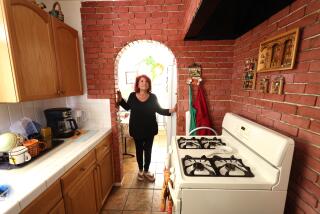Cubic Disputes Award : Orange County Firm Gets Callbox Contract
- Share via
Two years ago, elected officials--after one woman was killed and another raped at gunpoint when their cars broke down--faced escalating pressure from the public to have an emergency callbox system installed on San Diego County’s freeways.
On Tuesday, a board of those elected officials voted to award a $9.6-million contract to an Orange County firm for nearly 1,000 callboxes that will dot San Diego County’s 300-mile freeway system.
Anaheim-based Comarco Inc. was awarded the San Diego County contract over San Diego-based Cubic Corp. to install and service the solar-powered cellular telephones to be placed along county freeways beginning later this summer.
Protest Lodged
But a Cubic official protested Tuesday that the award, made by San Diego Service Authority for Freeway Emergencies--a board composed of seven local elected officials--was “unjust” because, while both firms offered the same high-tech equipment, the Cubic bid was $1.1 million below the Comarco figure.
“I don’t mind losing if there is a better offer,” said Keith Burnett, head of Cubic Communications Inc. “But this was not the case.”
Cubic officials challenged a callbox contract granted by the Orange County SAFE board to Comarco recently, contending that, under state law, a government contract must be awarded to the lowest responsible bidder. However, a Superior Court judge ruled that the SAFE board was not subject to that state regulation. In Orange County, where 1,000 callboxes are to be installed on 137 miles of freeway, Cubic’s bid was about $1.2 million lower than Comarco’s, Burnett said.
“Our only recourse at this juncture is to fight this in court,” Burnett said of the Orange County award. In San Diego, he said, “the board has just passed a motion,” and the award will not be granted until July 27, leaving room for negotiation.
Granville Bowman, county director of public works and administrator of the San Diego SAFE program, said he recommended Comarco over Cubic because of Comarco’s track record, including several pilot installations to test the cellular phone system.
Bowman said that Comarco, during the last two years, has participated in a pilot project in New York City’s Central Park, in one along Los Angeles’ Golden State Freeway, and in about eight other tests around the country.
Cubic, Bowman said, “has not been in the callbox business” in the past but “it’s very possible that in the future they will be able to compete and we might very well buy the next round of boxes from them.”
County Supervisor Susan Golding, a member of the SAFE board who voted on the losing side of a 4-3 approval of the Comarco award Monday, charged that the Anaheim firm’s tests had been less than successful.
The Central Park system was “a dismal failure,” Golding said, “and when we checked out the Golden State (freeway) installations, two of the three callboxes weren’t working.”
SAFE members voting for Comarco were County Supervisor Leon Williams, Councilman Jack Hanson of El Cajon, Mayor R.H. Dorman of Coronado and Councilman Ed Struiksma of San Diego. Golding, Councilwoman Ronnie Delaney of Del Mar and Councilwoman Gloria McColl of San Diego favored Cubic.
“Considering how short of funds we are, I would prefer to go with the lower bidder,” Golding said. “Cubic is not a fly-by-night company and it has a lot more at stake--being a local company--in this contract.
“I am going to watch Comarco closely every step of the way and insist that we get what we bargained for.”
Comarco spokesman Don Bailey said that the firm would begin installations “before fall” and finish installation countywide within a year.
The yellow callboxes will be installed along the outside lanes of all freeways in the county, Bailey said. Steel boxes will contain the cellular units--similar to car phones--with a receiver and a single button putting the caller in direct contact with the California Highway Patrol.
CHP dispatchers will be able to locate the source of the emergency call automatically, he said, and direct needed assistance.
The rainproof, vandal-proof cellular units will be mounted on 14-foot poles topped with an antenna and a solar panel to charge the phone batteries.
The cellular-solar system requires no underground wiring or connections and, therefore, is only about one-third the cost of earlier callbox systems, he said.
Bowman said that the emergency freeway callbox system is being paid for through collection of a $1 fee on annual vehicle registrations for San Diego County cars. Initially, the emergency telephones will be spaced about a mile apart, except in the busier stretches of freeway, where they will be closer together, he said.
When more funds are available, spacing of the callbox system will be shortened to a quarter of a mile in most areas, he added.
More to Read
Inside the business of entertainment
The Wide Shot brings you news, analysis and insights on everything from streaming wars to production — and what it all means for the future.
You may occasionally receive promotional content from the Los Angeles Times.










